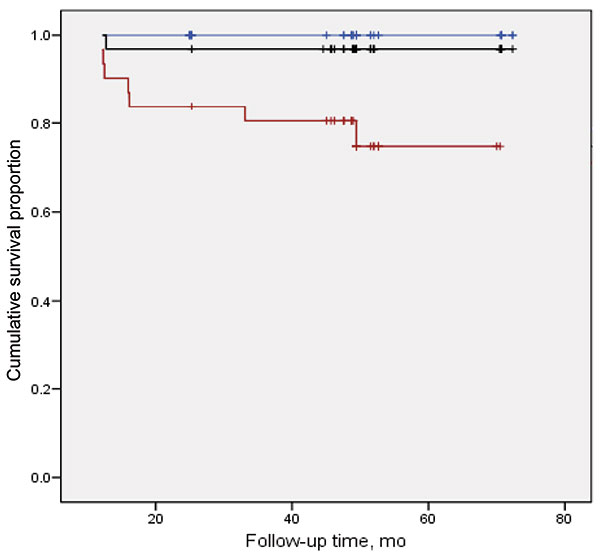Volume 16, Number 5—May 2010
Dispatch
Vitamin D Deficiency and Tuberculosis Progression
Figure 2

Figure 2. Risk for tuberculosis (TB) progression, by baseline plasma vitamin D level. Risk for progression in 100 household contacts of TB patients are indicated in cohort-based tertiles of vitamin D levels in plasma at baseline: lowest, <7.4 ng/mL (red); middle, 7.4–13 ng/mL (black); highest, >13 ng/mL (blue). Plus signs indicate censoring points. Events are defined as time to diagnosis of active TB disease during follow-up.
Page created: December 23, 2010
Page updated: December 23, 2010
Page reviewed: December 23, 2010
The conclusions, findings, and opinions expressed by authors contributing to this journal do not necessarily reflect the official position of the U.S. Department of Health and Human Services, the Public Health Service, the Centers for Disease Control and Prevention, or the authors' affiliated institutions. Use of trade names is for identification only and does not imply endorsement by any of the groups named above.